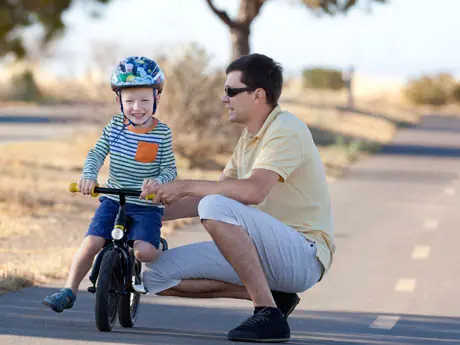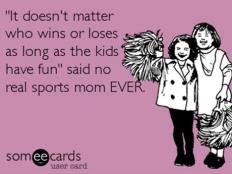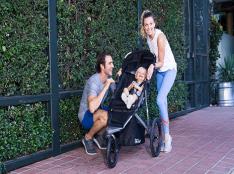
Learning to ride a bike is a rite of passage. The thought alone conjures memories of Mom and Dad offering a supportive start with a gentle push on the seat; that unsure wobble from side to side; the shaky pedaling; the scraped knees and elbows; and of course, the feelings of happiness and pride when you finally succeed.
But selecting a child's first bike starts way before the two-wheeler that he or she will ride up and down the street. From tricycles to balance bikes to trailer bikes, there are plenty of options for teaching young riders to put rubber to road this summer.
More: When to Sign Your Child up for a Summer Camp
Tricycles (Ages 2 to 4)
For the youngest of riders, a tricycle offers a child the chance to develop strength, balance, coordination and independent play skills – all while enjoying the great outdoors. The price and quality of tricycles varies greatly, with big box stores selling plastic models for $40 and specialty stores featuring some upwards of $200. Parents should factor in the quality and how well the bike will grow with the child. A tricycle that has a longer or adjustable seat will let the child use it for several years – and grow several inches – and sealed wheels will be durable and low maintenance.
Balance Bikes (Ages 2 and older)
Balance bikes allow active kids to have the look of a two-wheel bike without having to pedal. Rather, the kids move the bike Flintstone-style, pushing off with their feet. The benefit: increased balance, greater strength and coordination. A strider, as they are called, can also be easier than a tricycle for a child to navigate over uneven sidewalks and up hills. Parents should look for a bike with a frame that will be manageable at a younger age. An adjustable seat post and solid rubber tires are good bets to ensure the kid gets as much use out of the bike as possible.
More: 6 Reasons to Encourage Your Child to Run
Trailer Bikes (Ages 4 to 7)
A complement to a tricycle, strider or two-wheeler with training wheels, the trailer bike allows children to go on longer rides with the family that they otherwise wouldn't be able to do. The child can still work on the coordination and strength required to pedal a bike, while having the ability to take a break as necessary. The best part? The trailer bike attaches to most adult bicycles – no need for mom or dad to get a new bike. Some models feature a rear derailleur, allowing the rider to experiment with switching gears. Parents should look for a trailer bike with a quick release and a hitch with a few connection points to minimize wobble.
About the Author


 Find
Find 







Discuss This Article